This guide is designed to equip you with the tools and techniques needed to write landing page copy that converts. From crafting headlines that grab attention to creating clear and compelling calls to action, every element of your copy is crucial in guiding visitors toward conversion. Whether you’re launching a new product, capturing leads, or promoting a special offer, the principles outlined in this guide will help you craft messages that resonate with your audience, address their needs, and encourage them to take the desired action.
1. Know Your Audience Inside and Out

Create Buyer Personas: Develop detailed personas that represent your ideal customers. Include information about their goals, challenges, and what drives their purchasing decisions.
Use Customer-Centric Language: Speak directly to your audience’s pain points and desires. Show them that you understand their challenges and have the solution they need.
2. Start with a Compelling Headline
Your headline is the first thing visitors see when they land on your page, making it one of the most critical elements of your copy. A compelling headline should grab attention, convey the core benefit of your offer, and encourage readers to keep scrolling.
Be Clear and Direct: Avoid vague or overly clever headlines. Your audience should immediately understand what you’re offering and why it matters to them.
Highlight the Benefit: Focus on the value your product or service provides. For example, instead of saying, “Get Our Software,” say, “Boost Your Productivity by 30% with Our Software.”
3. Write Persuasive Subheadings

Break Down Information: Use subheadings to segment your copy into digestible chunks. Each section should build on the previous one, leading your audience closer to conversion.
Incorporate Power Words: Use persuasive language that evokes emotion and urgency. Words like “Proven,” “Guaranteed,” and “Exclusive” can motivate action.
4. Focus on the Benefits, Not Just Features
While features are important, benefits are what truly sell your product or service. Your copy should clearly communicate how your offering will improve your customers’ lives.
Translate Features into Benefits: For every feature you mention, explain the benefit it provides. For example, a feature might be “24/7 customer support,” but the benefit is “Get help whenever you need it, day or night.”
Use the “So What?” Test: After writing about a feature, ask yourself, “So what?” You need to refine your copy if the benefit isn’t immediately apparent.
5. Create a Clear and Compelling Call-to-Action (CTA)

Use Action-Oriented Language: Phrases like “Get Started,” “Claim Your Free Trial,” or “Download Now” tell visitors exactly what to do next.
Highlight the Value: Reinforce what the user will gain by taking action. For example, “Get Your Free Ebook” is more compelling than simply “Download.”
6. Leverage Social Proof and Trust Signals
Trust is a crucial factor in the decision-making process. Including social proof elements like testimonials, case studies, and trust badges can significantly boost your conversion rates.
Showcase Customer Testimonials: Use quotes from satisfied customers to build credibility and trust. Video testimonials can be compelling.
Include Trust Badges: Display security badges, payment guarantees, and industry certifications to reassure visitors that their information is safe.
7. Write for Both Humans and Search Engines

Incorporate Keywords Naturally: Identify and include relevant keywords that match search intent, but avoid keyword stuffing. The copy should flow naturally and be easy to read.
Optimize Meta Tags and Descriptions: Ensure that your title tags, meta descriptions, and header tags are optimized with target keywords and provide a clear overview of your page’s content.
8. Test and Optimize Continuously
Even the most well-written copy can be improved. Regularly testing and optimizing your landing page copy can lead to incremental gains in conversion rates over time.
A/B Testing: Test different headlines, CTAs, and copy variations to see what resonates best with your audience.
Analyze User Behavior: Use tools like heatmaps and session recordings to understand how visitors interact with your page. Make adjustments based on their behavior.
9. Keep It Simple and Focused

Eliminate Jargon: Avoid industry-specific terms that your audience may not understand. Use simple, straightforward language.
Stick to One Goal: Each landing page should have a clear objective. Whether it’s capturing leads, encouraging sign-ups, or driving sales, ensure all elements on the page support that goal.
Conclusion
Crafting compelling copy for your landing pages is an art and a science. By understanding your audience, focusing on benefits, and using persuasive language, you can create landing pages that capture attention and convert visitors into customers. Remember to keep testing and refining your copy to ensure it continues to perform at its best. With the right approach, your landing pages can become powerful tools in your marketing arsenal, driving growth and success for your business.



